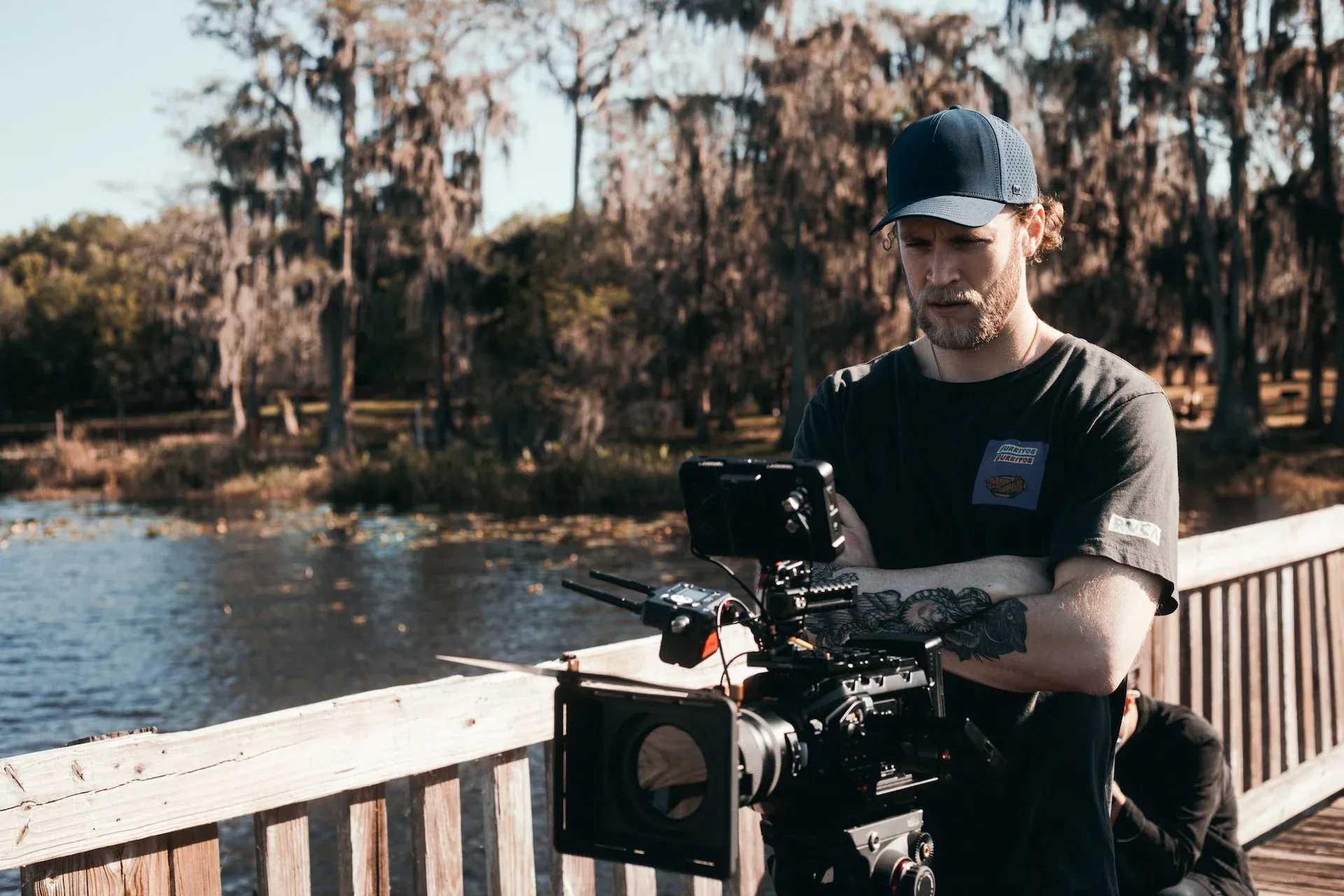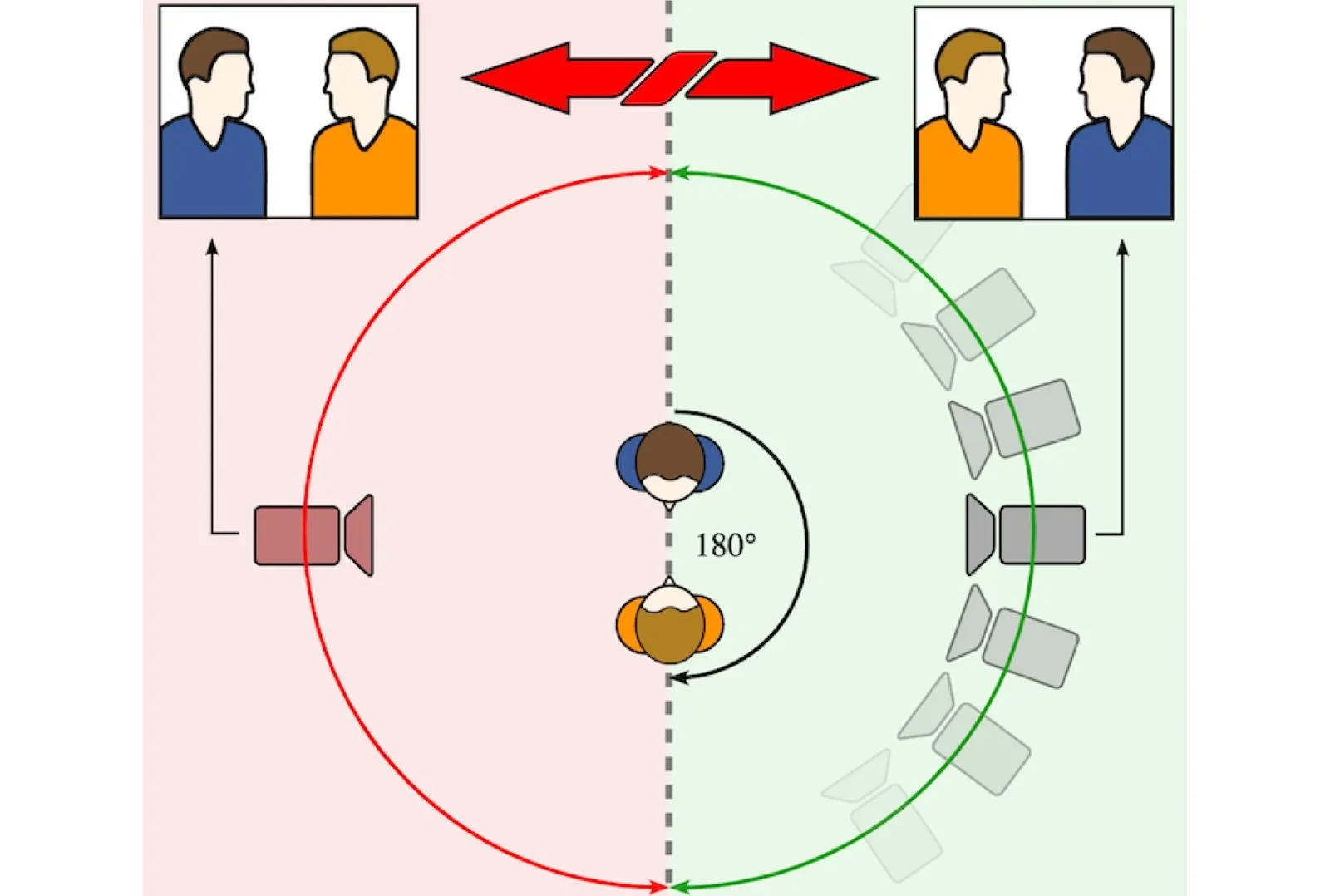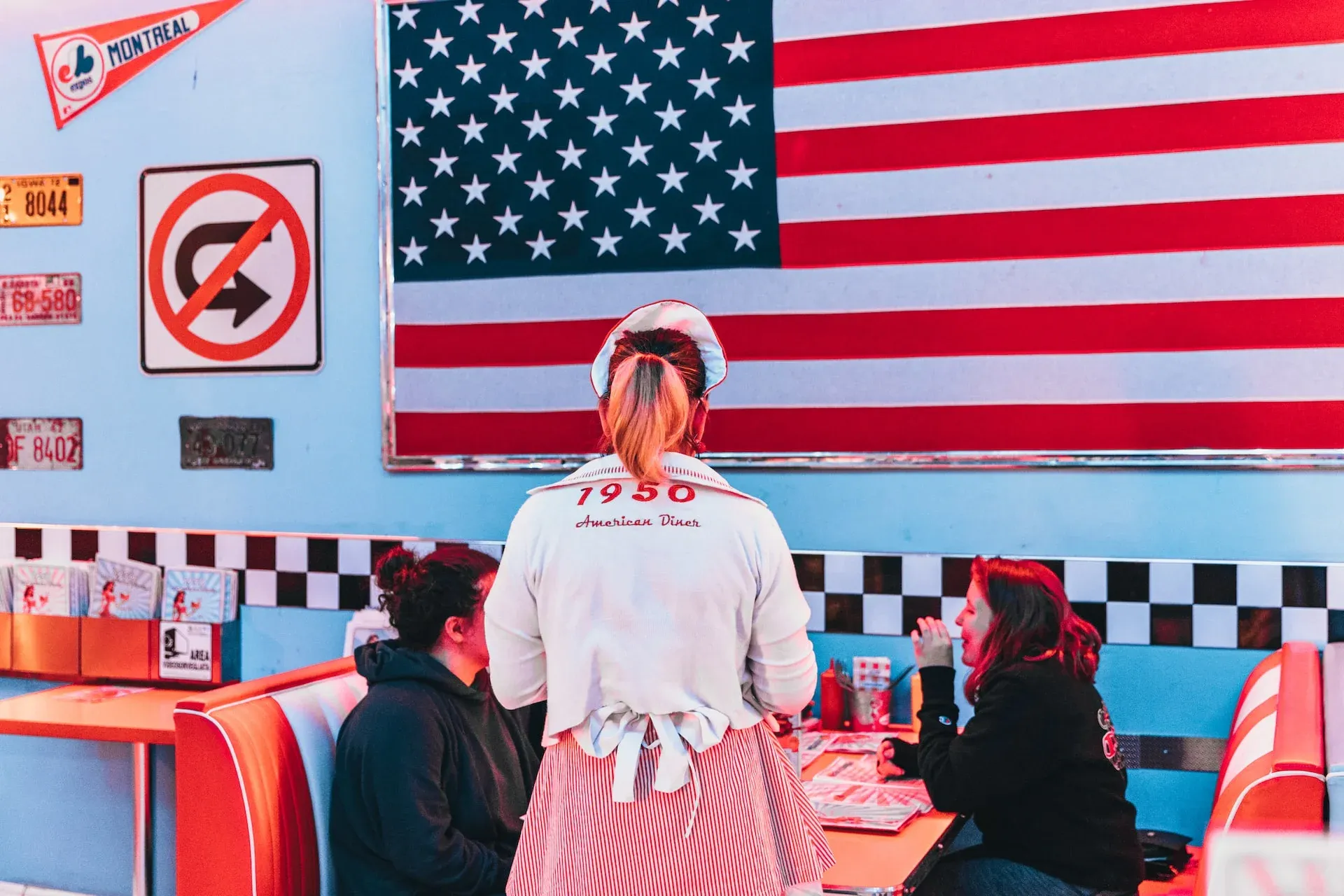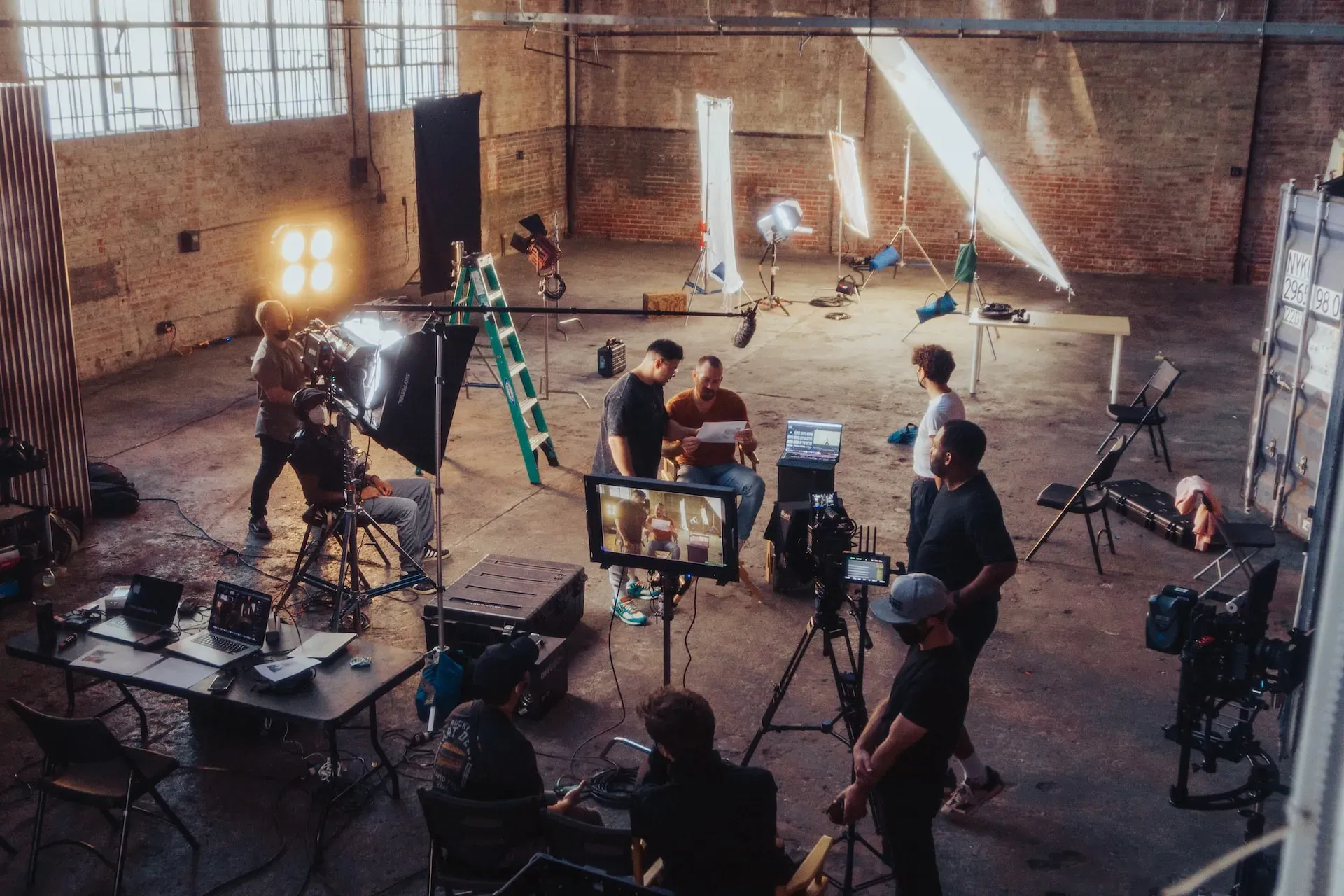Learn, follow, and break the 180-degree rule while filming
The 180-degree rule is key to filmmaking, and every content creator should take the time to master it. But what is the 180-degree rule, how do you use it, and is there an upside to breaking it?

The 180-degree rule is key to filmmaking, and every content creator should take the time to master it. But what is the 180-degree rule, how do you use it, and is there an upside to breaking it?
What is the 180-degree rule and why is it important?
The 180-degree rule is a basic filmmaking guideline that ensures continuity between shots. It tracks the relationship between two on-screen subjects – these could be characters, objects, locations, or a combination. You’d use this technique to draw an imaginary line of action in the middle of the scene, between the subjects. You’ll often find this used in dialogue-heavy scenes, where the 180-degree rule is represented as the space between two characters’ eyelines.

The cameras must not cross their respective halves of the line during the shoot, capturing the subjects from a consistent viewpoint. This means that when someone watches the footage, subject one is always in frame right of subject two. For example, one camera would capture subject one, then a second would capture subject two. This footage would be cut to create a seamless edit that jumps between subjects as they interact.
Let’s say you’re watching a conversation in a diner. In real life, one person will sit on the left and the other to the right. You’d use the 180-degree rule to recreate that on-screen, ensuring the subjects stay on ‘their’ side of the axis – they maintain the same left/right relationship for the whole scene, so they look like they’re facing one another in your edit.

The 180-degree rule creates a visual connection between the screen and audience – the consistency means it’s easy to follow what’s happening. While we used an example of the 180-degree rule to shoot a conversation in a diner, it’s vital in capturing scenes involving sport, fighting, travel, and more without causing confusion.
The 180-degree rule helps establish the tone and visual palette for your content. The soundtrack is another element that can make or break your scene – after all, bad music kills good video. At Epidemic Sound, we have 40,000 tracks and 90,000 sound effects for you to dig into. Check out the catalog below and find the perfect tune today.

Why is it called the 180-degree rule?
It’s called the 180-degree rule because the imaginary line you draw splits the visual into two semi-circles, which are 180 degrees each. The subjects are positioned at the furthermost angles of their respective shapes, creating a distance between them of – you guessed it – 180 degrees.
What happens when you break the 180-degree rule?
Breaking the 180-degree rule is a common video editing mistake for beginners. If you don’t have your subjects on a 180 axis, it can make your content look pretty weird. Basically, if you break the 180-degree rule without meaning to, your content will most likely suffer.
What is the most common mistake that causes filmmakers to break the 180-degree rule?
Filmmakers might accidentally break the 180-degree rule by crossing the line of action. They might not mean to – they’re just tracking the subject, or they’ve gotten lost in the action and want to capture something special – but it usually results in a fumbled, disorientating edit.

When can you break the 180-degree rule?
Here comes the fun part – it’s time to break the 180-degree rule! If you understand what it is and when you should stick to it, breaking the 180-degree rule can add a stylized sheen to your content. It can draw out certain themes, highlight character motives and, sometimes, it can just look cool.
If you knowingly break the 180-degree rule, you can create something known as a reverse angle. These angles do what they say on the can, offering viewers a perspective 180 degrees from where they’d usually see it. So, if you’re filming two characters talking, a reverse angle could be a shot from behind one of their heads. It can look a little confusing if not done properly – or on purpose! – but it can also make for some exciting scenes.
One of the most famous examples of breaking the 180-degree rule is this one from ‘Jaws.’ You know it. ‘You’re gonna need a bigger boat.’ That one. Roy Scheider’s Chief Brody aimlessly throws chum into the water, cracking a joke. The shark surfaces, and as Brody realizes, he jolts back in shock. The next shot shows him from the ‘wrong’ angle – it gives the frame a sense of unease and dread, which is pretty fitting for when a massive shark appears.
The 180-degree rule is an essential part of filmmaking. Now you know how to use – and break! – it, it’s time to ensure your content is covered when it comes to the law. Licensing music and obtaining the correct rights is essential for content creation, and it can be tricky business. You don’t need the hassle. You need Epidemic Sound.
Our catalog is high-quality, affordable, and safe. An Epidemic Sound subscription goes beyond royalty-free music, removing the headache of licensing and freeing you up to do what you do best. You can enjoy the safety of our license hand-in-hand with our massive catalog of 40,000 tracks, covering just about every genre you can think of. You’ll also gain unlimited access to our advanced search functions — finding the right sound’s never been easier.
It’s better than royalty-free. It’s worry-free. Get started with Epidemic Sound below.

Are you a video editor or filmmaker? Whether you’re an absolute master or just a beginner, discover what Epidemic Sound has to offer on our Epidemic Sound for Filmmaking page. Oh, and if you’re looking for some background music for your videos, we got you covered.
Related posts:

